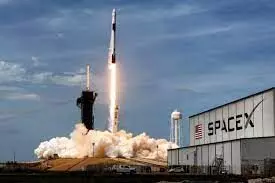
NASA-SpaceX spacecraft takes off loaded with climate research experiments
text_fieldsA resupply spacecraft by SpaceX for NASA has left for the International Space Station (ISS), and it is carrying several climate research experiments. This is SpaceX's 25th commercial resupply services mission to the ISS for the American space agency NASA.
The Cargo Dragon spacecraft has 5,800 pounds of science experiments along with crew supplies and other cargo. It was launched on the Falcon 9 rocket from NASA's Kennedy Space Center in Florida.
One of the experiments on the spacecraft is the Earth Surface Mineral Dust Investigation (EMIT), an instrument with NASA's imaging spectroscopy technology to study the mineral composition of dust in Earth's arid regions.
The mineral dust can reach the farthest regions and affect climate, vegetation, and weather among others. The EMIT will gather images of these changes over the year and create a map of the mineral composition. Experts say dust particles that carry dark minerals can warm up a region by absorbing sunlight. On the other hand, light-coloured minerals in the dust can keep a region cool.
Scientists are also looking forward to studying blowing dust's impact on the air quality and surface conditions like the rate of melting snow and the health of phytoplankton in the ocean. This will also provide insight into how mineral dust influences human populations.
It is carrying the Genes in Space-9 experiment that is aimed at creating portable, simple, and low-cost tools for medical diagnostics. Another experiment - the Biopolymer Research for In-Situ Capabilities experiment - will study how microgravity can affect the creation of concrete alternatives using organic materials.
Researchers are also looking forward to conducting an Immunosenescence investigation aboard the ISS. This will help understand the effects of microgravity on the immune system. It has been theorised that microgravity results in changes in the cells of the human body.
Another experiment is set to study the effects of microgravity on metabolic interactions. Earth's climate and weather systems are also a focus of the study.






















